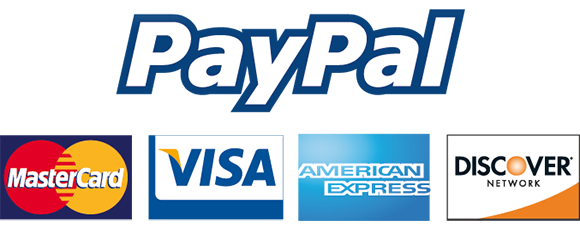pharmacological treatments
Assessment Instructions
Imagine your supervisor has asked you to conduct a lunch and learn session to educate your fellow nursing staff on pharmacological interventions.
Preparation
Select a disease or health condition that requires pharmacological intervention. You may choose any disease or health condition you wish, but the disease or health condition must be relevant to nurses from a variety of settings (for example: ER, pediatrics, public health, et cetera).
Requirements
Once you have selected a disease or health condition, create a PowerPoint presentation you could use in your lunch and learn session, including the following:
- Identify the disease or health condition you have chosen, along with the areas where nurses are likely to see it. (Do this in the agenda slide or next slide after the agenda.)
- Identify the three drugs used most often in the treatment of the disease or health condition.
- Explain the types of actions, side effects, indications, and contraindications that could be expected from the pharmacological treatment.
- Describe the treatment regime most often prescribed for the disease or health condition. This should include pharmacology but not be limited to pharmacology.
- Explain how the treatment regime (including pharmacology) may impact a client’s lifestyle. Consider things such as finances, ease or complexity of administration, instructions (frequency, duration), et cetera.
- Describe how a nurse should monitor a client being treated for the disease or health condition in order to obtain a quality patient outcome.
- Explain any controversies associated with the drugs used in the treatment. For example, is there a black box warning with any of the drugs?
Use the notes section of each slide to expand your points or draft your mock oral presentation (or both) and reference your resources. Use at least 3 peer-reviewed or professional resources to support your work in this assessment. Be sure your PowerPoint includes a title slide, a slide with your agenda or list of topics to be covered, and a reference slide. Follow current APA style and formatting guidelines for your citations and references.
Additional Requirements
- Number of slides: 10–12, not including the title and reference slides.
- Be creative. Consider your intended audience.
Suggested Resources
Library Resources
The following e-books or articles from the Capella University Library are linked directly in this course:
- Ward-Abel, N., Vernon, K., & Warner, R. (2014). An exciting era of treatments for relapsing-remitting multiple sclerosis. British Journal of Neuroscience Nursing, 10(1), 21–28.
- Cohen, M. R. (2015). Medication errors. Nursing, 45(3), 72.
- Hernandez, J., Goeckner, B., & Wanzer, L. (2011). Perioperative pharmacology: Pharmacotherapeutics, pharmacokinetics, and pharmacodynamics. AORN Journal, 93(2), 259–266; 267–269 (quiz).
- Cooper, G. A. A., Kronstrand, R., & Kintz, P. (2012). Society of Hair Testing guidelines for drug testing in hair. Forensic Science International (Online), 218(1), 20–24.
- Drach-Zahavy, A., Somech, A., Admi, H., Peterfreund, H., Peker, H. & Priente, O. (2014). How do we learn from errors? A prospective study of the link between the ward’s learning practices and medication administration errors. International Journal of Nursing Studies, 51(3), 448–457.
- Eisenberg, S. (2012). NIOSH safe handling of hazardous drugs guidelines becomes state law. Journal of Infusion Nursing, 35(5), 316–319.
- Molloy, L., Field, J., Beckett, P., & Holmes, D. (2012). PRN psychotropic medication and acute mental health nursing: Reviewing the evidence. Journal of Psychosocial Nursing & Mental Health Services, 50(8), 12–15.
- Fleming, S., Brady, A., & Malone, A. (2014). An evaluation of the drug calculation skills of registered nurses. Nurse Education in Practice, 14(1), 55–61.
- Bench, S., Day, T., & Metcalfe, A. (2013). Randomised controlled trials: An introduction for nurse researchers. Nurse Researcher, 20(5), 38–44.
- Jenny, J. L., Jenny, C., Jayadevan, S., Jayakumary, M., Mohamed, A., Arun, S., & Mohamed, F. M. (2012). Nurses opinion on the attributes of polypharmacy in patient safety. Acta Medica Iranica, 50(7), 516–521.
- Patel, N. K., Wood, R. C., & Espino, D. V. (2012). Cultural considerations: Pharmacological and nonpharmacological means for improving blood pressure control among Hispanic patients. International Journal of Hypertension, 2012, 831016.
- Cleary-Holdforth, J., & Leufer, T. (2013). The strategic role of education in the prevention of medication errors in nursing: Part 2. Nurse Education in Practice, 13(3), 217–220.
Course Library Guide
A Capella University library guide has been created specifically for your use in this course. You are encouraged to refer to the resources in the BSN-FP4016 – Pharmacology for Patient Safety Library Guide to help direct your research.
Internet Resources
Access the following resources by clicking the links provided. Please note that URLs change frequently. Permissions for the following links have either been granted or deemed appropriate for educational use at the time of course publication.
- Institute for Safe Medication Practices. (n.d.). Retrieved from http://ismp.org/
- Healthy People 2020. (2015). Retrieved from http://www.healthypeople.gov/
- National Heart, Lung, and Blood Institute. (n.d.). Retrieved from http://www.nhlbi.nih.gov/
- Heart Failure Society of America. (n.d.). Retrieved from http://www.hfsa.org/
- You may wish to explore this Web site and review information related to heart failure classification.
- Montalvo, I. (2007). The National Database of Nursing Quality Indicators (NDNQI). OJIN: The Online Journal of Issues in Nursing, 12(3).
Bookstore Resources
The resources listed below are relevant to the topics and assessments in this course and are not required. Unless noted otherwise, these materials are available for purchase from the Capella University Bookstore. When searching the bookstore, be sure to look for the Course ID with the specific –FP (FlexPath) course designation.
- Burchum, J., & Rosenthal, L. (2016). Lehen’s pharmacology for nursing care (9th ed.). St. Louis, MO: Elsevier Saunders.
- Chapters 1, 2, 4, 5, 43, 47, 48, 21, 23, 31, 32, 50, 57, 58, and 76.
ORDER YOUR ORIGINAL PAPER
Request for a custom paper or place a new order
THE BEST CUSTOM ESSAY WRITING SERVICE AT YOUR FINGERTIPS
Forget All Your Assignment & Essay Related Worries By Simply Filling Order Form


